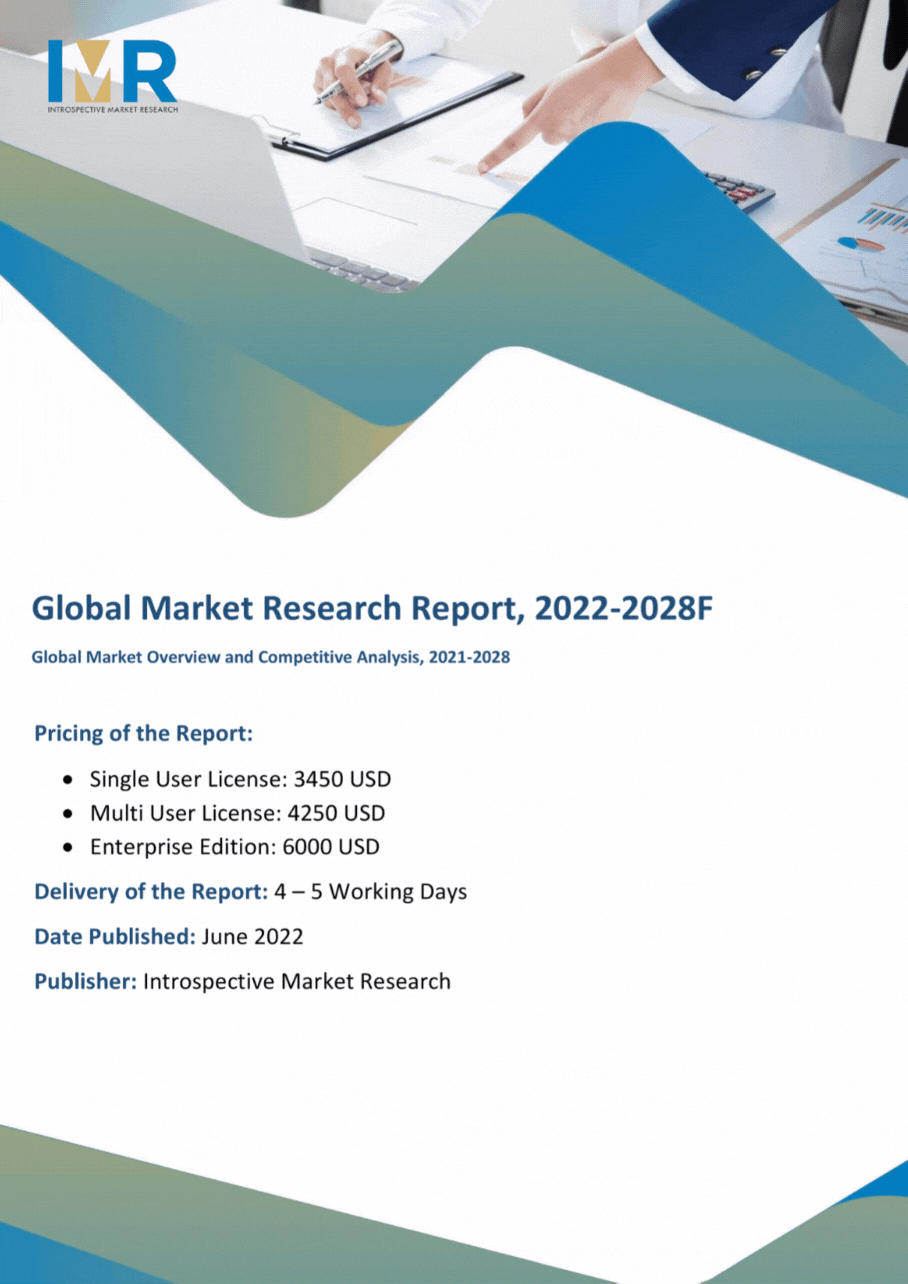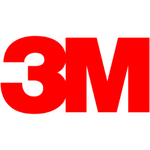Global Automation as Service Market Overview
The Global Automation as a Service Market was estimated at USD 9.12 Billion in 2022, and is projected to reach USD 45.65 Billion by 2030, growing at a CAGR of 22.3 % over the analysis period.
Automation has progressed beyond repetitive tasks and cost-cutting. It now streamlines operations, improves efficiency, and provides a far better customer experience. In an era of increasing competitiveness, globalization, and changing business cycles, there is a greater emphasis on innovation, increasing agility, and reducing operational complexity. To effectively achieve these goals, Automation as a Service (AaaS) comes to the rescue. With the increasing adoption of Machine Learning and Artificial Intelligence, AaaS is becoming increasingly important and is experiencing rapid growth.
Business Process Automation is concerned with automating day-to-day IT processes and business functions in order to increase efficiency, reduce costs, and ensure smooth operations. Various factors, such as companies planning to migrate their infrastructure to the cloud, bolstering business continuity, and improving business operations, have contributed to the widespread use of BPA across organizations. Generali, a major European insurance company, for example, shifted from manual, time- and money-consuming business processes to automated ones. This resulted in up to 90% savings through repeatable processes and a 50% reduction in the time required to underwrite complex activities. Similar initiatives by other companies is anticipated to propel the growth of the automation as a service market in the projected period.

Market Dynamics And Factors For Automation as a Service Market
Drivers:
- Growing Demand For Increase In Productivity And Efficiency Across Several Industrial Verticals
Restraints:
- High Deployment Cost And Data Security Issues
Opportunity:
- Industry 4.0 And Rise In The Number Of SMEs Adopting Automation Services
Challenges:
- Need To Prevent Data Leakage And Enhancing Cyber Security
Covid-19 Impact Analysis On Automation as a Service Market
As a result of the COVID-19 epidemic, self-service networks, remote workspaces, 'as a service' models, and robust AI infrastructure are on the rise. In recent months, the adoption rate has increased even more. According to a Nasscom report published in 2020, the COVID-19 pandemic had accelerated global growth of automation technology, providing massive opportunities for the AaaS industry. The AaaS helps businesses and organizations improve their service delivery and operations processes for greater accuracy, cost savings, and competitiveness. AaaS technologies can efficiently, easily, and affordably simplify time-consuming, extremely repetitive, and error-prone internal IT and business processes, allowing businesses to redirect resources to other roles and divisions thus, supporting the development of the automation as a service market over the forecasted period.
Top Key Players Covered In Automation as a Service Market
- IBM
- Hexaware Technologies
- Automation Anywhere Inc.
- Blue Prism Group PLC
- Cypress
- Microsoft Corporation
- Pegasystems Inc
- Kofax Inc.
- HCL Technologies Limited
- Hewlett Packard Enterprise Development LP
- NICE Ltd.
- WorkFusion Inc.
- Uipath Inc., and Other Major Players
Key Industry Development In The Automation as a Service Market
In February 2022, WorkFusion Inc. launched its new AI-powered Digital Workforce. These new knowledge workers arrive on the job fully trained and immediately productive, working seamlessly alongside traditional team members, leveraging the company's decade of experience in automating complex operational functions.
|
Global Automation as a Service Market |
|||
|
Base Year: |
2022 |
Forecast Period: |
2023-2030 |
|
Historical Data: |
2017 to 2022 |
Market Size in 2022: |
USD 9.12 Bn. |
|
Forecast Period 2023-30 CAGR: |
22.3% |
Market Size in 2030: |
USD 45.65 Bn. |
|
Segments Covered: |
By Component |
|
|
|
By Business Function |
|
||
|
By End-Use Industry |
|
||
|
By Region |
|
||
|
Key Market Drivers: |
|
||
|
Key Market Restraints: |
|
||
|
Key Opportunities: |
|
||
|
Companies Covered in the report: |
|
||
Chapter 1: Introduction
1.1 Research Objectives
1.2 Research Methodology
1.3 Research Process
1.4 Scope and Coverage
1.4.1 Market Definition
1.4.2 Key Questions Answered
1.5 Market Segmentation
Chapter 2:Executive Summary
Chapter 3:Growth Opportunities By Segment
3.1 By Component
3.2 By Business Function
3.3 By End Use Industry
Chapter 4: Market Landscape
4.1 Porter's Five Forces Analysis
4.1.1 Bargaining Power of Supplier
4.1.2 Threat of New Entrants
4.1.3 Threat of Substitutes
4.1.4 Competitive Rivalry
4.1.5 Bargaining Power Among Buyers
4.2 Industry Value Chain Analysis
4.3 Market Dynamics
4.3.1 Drivers
4.3.2 Restraints
4.3.3 Opportunities
4.5.4 Challenges
4.4 Pestle Analysis
4.5 Technological Roadmap
4.6 Regulatory Landscape
4.7 SWOT Analysis
4.8 Price Trend Analysis
4.9 Patent Analysis
4.10 Analysis of the Impact of Covid-19
4.10.1 Impact on the Overall Market
4.10.2 Impact on the Supply Chain
4.10.3 Impact on the Key Manufacturers
4.10.4 Impact on the Pricing
Chapter 5: Automation as a Service Market by Component
5.1 Automation as a Service Market Overview Snapshot and Growth Engine
5.2 Automation as a Service Market Overview
5.3 Solutions
5.3.1 Introduction and Market Overview
5.3.2 Historic and Forecasted Market Size (2016-2028F)
5.3.3 Key Market Trends, Growth Factors and Opportunities
5.3.4 Solutions: Geographic Segmentation
5.4 Services
5.4.1 Introduction and Market Overview
5.4.2 Historic and Forecasted Market Size (2016-2028F)
5.4.3 Key Market Trends, Growth Factors and Opportunities
5.4.4 Services: Geographic Segmentation
Chapter 6: Automation as a Service Market by Business Function
6.1 Automation as a Service Market Overview Snapshot and Growth Engine
6.2 Automation as a Service Market Overview
6.3 Information Technology
6.3.1 Introduction and Market Overview
6.3.2 Historic and Forecasted Market Size (2016-2028F)
6.3.3 Key Market Trends, Growth Factors and Opportunities
6.3.4 Information Technology: Geographic Segmentation
6.4 Human Resources
6.4.1 Introduction and Market Overview
6.4.2 Historic and Forecasted Market Size (2016-2028F)
6.4.3 Key Market Trends, Growth Factors and Opportunities
6.4.4 Human Resources: Geographic Segmentation
6.5 Finance
6.5.1 Introduction and Market Overview
6.5.2 Historic and Forecasted Market Size (2016-2028F)
6.5.3 Key Market Trends, Growth Factors and Opportunities
6.5.4 Finance: Geographic Segmentation
6.6 Sales & Marketing
6.6.1 Introduction and Market Overview
6.6.2 Historic and Forecasted Market Size (2016-2028F)
6.6.3 Key Market Trends, Growth Factors and Opportunities
6.6.4 Sales & Marketing: Geographic Segmentation
6.7 Operations
6.7.1 Introduction and Market Overview
6.7.2 Historic and Forecasted Market Size (2016-2028F)
6.7.3 Key Market Trends, Growth Factors and Opportunities
6.7.4 Operations: Geographic Segmentation
Chapter 7: Automation as a Service Market by End Use Industry
7.1 Automation as a Service Market Overview Snapshot and Growth Engine
7.2 Automation as a Service Market Overview
7.3 Healthcare
7.3.1 Introduction and Market Overview
7.3.2 Historic and Forecasted Market Size (2016-2028F)
7.3.3 Key Market Trends, Growth Factors and Opportunities
7.3.4 Healthcare: Geographic Segmentation
7.4 BFSI
7.4.1 Introduction and Market Overview
7.4.2 Historic and Forecasted Market Size (2016-2028F)
7.4.3 Key Market Trends, Growth Factors and Opportunities
7.4.4 BFSI: Geographic Segmentation
7.5 Automotive
7.5.1 Introduction and Market Overview
7.5.2 Historic and Forecasted Market Size (2016-2028F)
7.5.3 Key Market Trends, Growth Factors and Opportunities
7.5.4 Automotive: Geographic Segmentation
7.6 Telecom & IT
7.6.1 Introduction and Market Overview
7.6.2 Historic and Forecasted Market Size (2016-2028F)
7.6.3 Key Market Trends, Growth Factors and Opportunities
7.6.4 Telecom & IT: Geographic Segmentation
7.7 Manufacturing
7.7.1 Introduction and Market Overview
7.7.2 Historic and Forecasted Market Size (2016-2028F)
7.7.3 Key Market Trends, Growth Factors and Opportunities
7.7.4 Manufacturing: Geographic Segmentation
7.8 Government
7.8.1 Introduction and Market Overview
7.8.2 Historic and Forecasted Market Size (2016-2028F)
7.8.3 Key Market Trends, Growth Factors and Opportunities
7.8.4 Government: Geographic Segmentation
7.9 Others
7.9.1 Introduction and Market Overview
7.9.2 Historic and Forecasted Market Size (2016-2028F)
7.9.3 Key Market Trends, Growth Factors and Opportunities
7.9.4 Others: Geographic Segmentation
Chapter 8: Company Profiles and Competitive Analysis
8.1 Competitive Landscape
8.1.1 Competitive Positioning
8.1.2 Automation as a Service Sales and Market Share By Players
8.1.3 Industry BCG Matrix
8.1.4 Heat Map Analysis
8.1.5 Automation as a Service Industry Concentration Ratio (CR5 and HHI)
8.1.6 Top 5 Automation as a Service Players Market Share
8.1.7 Mergers and Acquisitions
8.1.8 Business Strategies By Top Players
8.2 IBM
8.2.1 Company Overview
8.2.2 Key Executives
8.2.3 Company Snapshot
8.2.4 Operating Business Segments
8.2.5 Product Portfolio
8.2.6 Business Performance
8.2.7 Key Strategic Moves and Recent Developments
8.2.8 SWOT Analysis
8.3 HEXAWARE TECHNOLOGIES
8.4 AUTOMATION ANYWHERE INC.
8.5 BLUE PRISM GROUP PLC
8.6 CYPRESS
8.7 MICROSOFT CORPORATION
8.8 PEGASYSTEMS INC
8.9 KOFAX INC.
8.10 HCL TECHNOLOGIES LIMITED
8.11 HEWLETT PACKARD ENTERPRISE DEVELOPMENT LP
8.12 NICE LTD.
8.13 WORKFUSION INC.
8.14 UIPATH INC
8.15 OTHER MAJOR PLAYERS
Chapter 9: Global Automation as a Service Market Analysis, Insights and Forecast, 2016-2028
9.1 Market Overview
9.2 Historic and Forecasted Market Size By Component
9.2.1 Solutions
9.2.2 Services
9.3 Historic and Forecasted Market Size By Business Function
9.3.1 Information Technology
9.3.2 Human Resources
9.3.3 Finance
9.3.4 Sales & Marketing
9.3.5 Operations
9.4 Historic and Forecasted Market Size By End Use Industry
9.4.1 Healthcare
9.4.2 BFSI
9.4.3 Automotive
9.4.4 Telecom & IT
9.4.5 Manufacturing
9.4.6 Government
9.4.7 Others
Chapter 10: North America Automation as a Service Market Analysis, Insights and Forecast, 2016-2028
10.1 Key Market Trends, Growth Factors and Opportunities
10.2 Impact of Covid-19
10.3 Key Players
10.4 Key Market Trends, Growth Factors and Opportunities
10.4 Historic and Forecasted Market Size By Component
10.4.1 Solutions
10.4.2 Services
10.5 Historic and Forecasted Market Size By Business Function
10.5.1 Information Technology
10.5.2 Human Resources
10.5.3 Finance
10.5.4 Sales & Marketing
10.5.5 Operations
10.6 Historic and Forecasted Market Size By End Use Industry
10.6.1 Healthcare
10.6.2 BFSI
10.6.3 Automotive
10.6.4 Telecom & IT
10.6.5 Manufacturing
10.6.6 Government
10.6.7 Others
10.7 Historic and Forecast Market Size by Country
10.7.1 U.S.
10.7.2 Canada
10.7.3 Mexico
Chapter 11: Europe Automation as a Service Market Analysis, Insights and Forecast, 2016-2028
11.1 Key Market Trends, Growth Factors and Opportunities
11.2 Impact of Covid-19
11.3 Key Players
11.4 Key Market Trends, Growth Factors and Opportunities
11.4 Historic and Forecasted Market Size By Component
11.4.1 Solutions
11.4.2 Services
11.5 Historic and Forecasted Market Size By Business Function
11.5.1 Information Technology
11.5.2 Human Resources
11.5.3 Finance
11.5.4 Sales & Marketing
11.5.5 Operations
11.6 Historic and Forecasted Market Size By End Use Industry
11.6.1 Healthcare
11.6.2 BFSI
11.6.3 Automotive
11.6.4 Telecom & IT
11.6.5 Manufacturing
11.6.6 Government
11.6.7 Others
11.7 Historic and Forecast Market Size by Country
11.7.1 Germany
11.7.2 U.K.
11.7.3 France
11.7.4 Italy
11.7.5 Russia
11.7.6 Spain
11.7.7 Rest of Europe
Chapter 12: Asia-Pacific Automation as a Service Market Analysis, Insights and Forecast, 2016-2028
12.1 Key Market Trends, Growth Factors and Opportunities
12.2 Impact of Covid-19
12.3 Key Players
12.4 Key Market Trends, Growth Factors and Opportunities
12.4 Historic and Forecasted Market Size By Component
12.4.1 Solutions
12.4.2 Services
12.5 Historic and Forecasted Market Size By Business Function
12.5.1 Information Technology
12.5.2 Human Resources
12.5.3 Finance
12.5.4 Sales & Marketing
12.5.5 Operations
12.6 Historic and Forecasted Market Size By End Use Industry
12.6.1 Healthcare
12.6.2 BFSI
12.6.3 Automotive
12.6.4 Telecom & IT
12.6.5 Manufacturing
12.6.6 Government
12.6.7 Others
12.7 Historic and Forecast Market Size by Country
12.7.1 China
12.7.2 India
12.7.3 Japan
12.7.4 Singapore
12.7.5 Australia
12.7.6 New Zealand
12.7.7 Rest of APAC
Chapter 13: Middle East & Africa Automation as a Service Market Analysis, Insights and Forecast, 2016-2028
13.1 Key Market Trends, Growth Factors and Opportunities
13.2 Impact of Covid-19
13.3 Key Players
13.4 Key Market Trends, Growth Factors and Opportunities
13.4 Historic and Forecasted Market Size By Component
13.4.1 Solutions
13.4.2 Services
13.5 Historic and Forecasted Market Size By Business Function
13.5.1 Information Technology
13.5.2 Human Resources
13.5.3 Finance
13.5.4 Sales & Marketing
13.5.5 Operations
13.6 Historic and Forecasted Market Size By End Use Industry
13.6.1 Healthcare
13.6.2 BFSI
13.6.3 Automotive
13.6.4 Telecom & IT
13.6.5 Manufacturing
13.6.6 Government
13.6.7 Others
13.7 Historic and Forecast Market Size by Country
13.7.1 Turkey
13.7.2 Saudi Arabia
13.7.3 Iran
13.7.4 UAE
13.7.5 Africa
13.7.6 Rest of MEA
Chapter 14: South America Automation as a Service Market Analysis, Insights and Forecast, 2016-2028
14.1 Key Market Trends, Growth Factors and Opportunities
14.2 Impact of Covid-19
14.3 Key Players
14.4 Key Market Trends, Growth Factors and Opportunities
14.4 Historic and Forecasted Market Size By Component
14.4.1 Solutions
14.4.2 Services
14.5 Historic and Forecasted Market Size By Business Function
14.5.1 Information Technology
14.5.2 Human Resources
14.5.3 Finance
14.5.4 Sales & Marketing
14.5.5 Operations
14.6 Historic and Forecasted Market Size By End Use Industry
14.6.1 Healthcare
14.6.2 BFSI
14.6.3 Automotive
14.6.4 Telecom & IT
14.6.5 Manufacturing
14.6.6 Government
14.6.7 Others
14.7 Historic and Forecast Market Size by Country
14.7.1 Brazil
14.7.2 Argentina
14.7.3 Rest of SA
Chapter 15 Investment Analysis
Chapter 16 Analyst Viewpoint and Conclusion
|
Global Automation as a Service Market |
|||
|
Base Year: |
2022 |
Forecast Period: |
2023-2030 |
|
Historical Data: |
2017 to 2022 |
Market Size in 2022: |
USD 9.12 Bn. |
|
Forecast Period 2023-30 CAGR: |
22.3% |
Market Size in 2030: |
USD 45.65 Bn. |
|
Segments Covered: |
By Component |
|
|
|
By Business Function |
|
||
|
By End-Use Industry |
|
||
|
By Region |
|
||
|
Key Market Drivers: |
|
||
|
Key Market Restraints: |
|
||
|
Key Opportunities: |
|
||
|
Companies Covered in the report: |
|
||
LIST OF TABLES
TABLE 001. EXECUTIVE SUMMARY
TABLE 002. AUTOMATION AS A SERVICE MARKET BARGAINING POWER OF SUPPLIERS
TABLE 003. AUTOMATION AS A SERVICE MARKET BARGAINING POWER OF CUSTOMERS
TABLE 004. AUTOMATION AS A SERVICE MARKET COMPETITIVE RIVALRY
TABLE 005. AUTOMATION AS A SERVICE MARKET THREAT OF NEW ENTRANTS
TABLE 006. AUTOMATION AS A SERVICE MARKET THREAT OF SUBSTITUTES
TABLE 007. AUTOMATION AS A SERVICE MARKET BY COMPONENT
TABLE 008. SOLUTIONS MARKET OVERVIEW (2016-2028)
TABLE 009. SERVICES MARKET OVERVIEW (2016-2028)
TABLE 010. AUTOMATION AS A SERVICE MARKET BY BUSINESS FUNCTION
TABLE 011. INFORMATION TECHNOLOGY MARKET OVERVIEW (2016-2028)
TABLE 012. HUMAN RESOURCES MARKET OVERVIEW (2016-2028)
TABLE 013. FINANCE MARKET OVERVIEW (2016-2028)
TABLE 014. SALES & MARKETING MARKET OVERVIEW (2016-2028)
TABLE 015. OPERATIONS MARKET OVERVIEW (2016-2028)
TABLE 016. AUTOMATION AS A SERVICE MARKET BY END USE INDUSTRY
TABLE 017. HEALTHCARE MARKET OVERVIEW (2016-2028)
TABLE 018. BFSI MARKET OVERVIEW (2016-2028)
TABLE 019. AUTOMOTIVE MARKET OVERVIEW (2016-2028)
TABLE 020. TELECOM & IT MARKET OVERVIEW (2016-2028)
TABLE 021. MANUFACTURING MARKET OVERVIEW (2016-2028)
TABLE 022. GOVERNMENT MARKET OVERVIEW (2016-2028)
TABLE 023. OTHERS MARKET OVERVIEW (2016-2028)
TABLE 024. NORTH AMERICA AUTOMATION AS A SERVICE MARKET, BY COMPONENT (2016-2028)
TABLE 025. NORTH AMERICA AUTOMATION AS A SERVICE MARKET, BY BUSINESS FUNCTION (2016-2028)
TABLE 026. NORTH AMERICA AUTOMATION AS A SERVICE MARKET, BY END USE INDUSTRY (2016-2028)
TABLE 027. N AUTOMATION AS A SERVICE MARKET, BY COUNTRY (2016-2028)
TABLE 028. EUROPE AUTOMATION AS A SERVICE MARKET, BY COMPONENT (2016-2028)
TABLE 029. EUROPE AUTOMATION AS A SERVICE MARKET, BY BUSINESS FUNCTION (2016-2028)
TABLE 030. EUROPE AUTOMATION AS A SERVICE MARKET, BY END USE INDUSTRY (2016-2028)
TABLE 031. AUTOMATION AS A SERVICE MARKET, BY COUNTRY (2016-2028)
TABLE 032. ASIA PACIFIC AUTOMATION AS A SERVICE MARKET, BY COMPONENT (2016-2028)
TABLE 033. ASIA PACIFIC AUTOMATION AS A SERVICE MARKET, BY BUSINESS FUNCTION (2016-2028)
TABLE 034. ASIA PACIFIC AUTOMATION AS A SERVICE MARKET, BY END USE INDUSTRY (2016-2028)
TABLE 035. AUTOMATION AS A SERVICE MARKET, BY COUNTRY (2016-2028)
TABLE 036. MIDDLE EAST & AFRICA AUTOMATION AS A SERVICE MARKET, BY COMPONENT (2016-2028)
TABLE 037. MIDDLE EAST & AFRICA AUTOMATION AS A SERVICE MARKET, BY BUSINESS FUNCTION (2016-2028)
TABLE 038. MIDDLE EAST & AFRICA AUTOMATION AS A SERVICE MARKET, BY END USE INDUSTRY (2016-2028)
TABLE 039. AUTOMATION AS A SERVICE MARKET, BY COUNTRY (2016-2028)
TABLE 040. SOUTH AMERICA AUTOMATION AS A SERVICE MARKET, BY COMPONENT (2016-2028)
TABLE 041. SOUTH AMERICA AUTOMATION AS A SERVICE MARKET, BY BUSINESS FUNCTION (2016-2028)
TABLE 042. SOUTH AMERICA AUTOMATION AS A SERVICE MARKET, BY END USE INDUSTRY (2016-2028)
TABLE 043. AUTOMATION AS A SERVICE MARKET, BY COUNTRY (2016-2028)
TABLE 044. IBM: SNAPSHOT
TABLE 045. IBM: BUSINESS PERFORMANCE
TABLE 046. IBM: PRODUCT PORTFOLIO
TABLE 047. IBM: KEY STRATEGIC MOVES AND DEVELOPMENTS
TABLE 047. HEXAWARE TECHNOLOGIES: SNAPSHOT
TABLE 048. HEXAWARE TECHNOLOGIES: BUSINESS PERFORMANCE
TABLE 049. HEXAWARE TECHNOLOGIES: PRODUCT PORTFOLIO
TABLE 050. HEXAWARE TECHNOLOGIES: KEY STRATEGIC MOVES AND DEVELOPMENTS
TABLE 050. AUTOMATION ANYWHERE INC.: SNAPSHOT
TABLE 051. AUTOMATION ANYWHERE INC.: BUSINESS PERFORMANCE
TABLE 052. AUTOMATION ANYWHERE INC.: PRODUCT PORTFOLIO
TABLE 053. AUTOMATION ANYWHERE INC.: KEY STRATEGIC MOVES AND DEVELOPMENTS
TABLE 053. BLUE PRISM GROUP PLC: SNAPSHOT
TABLE 054. BLUE PRISM GROUP PLC: BUSINESS PERFORMANCE
TABLE 055. BLUE PRISM GROUP PLC: PRODUCT PORTFOLIO
TABLE 056. BLUE PRISM GROUP PLC: KEY STRATEGIC MOVES AND DEVELOPMENTS
TABLE 056. CYPRESS: SNAPSHOT
TABLE 057. CYPRESS: BUSINESS PERFORMANCE
TABLE 058. CYPRESS: PRODUCT PORTFOLIO
TABLE 059. CYPRESS: KEY STRATEGIC MOVES AND DEVELOPMENTS
TABLE 059. MICROSOFT CORPORATION: SNAPSHOT
TABLE 060. MICROSOFT CORPORATION: BUSINESS PERFORMANCE
TABLE 061. MICROSOFT CORPORATION: PRODUCT PORTFOLIO
TABLE 062. MICROSOFT CORPORATION: KEY STRATEGIC MOVES AND DEVELOPMENTS
TABLE 062. PEGASYSTEMS INC: SNAPSHOT
TABLE 063. PEGASYSTEMS INC: BUSINESS PERFORMANCE
TABLE 064. PEGASYSTEMS INC: PRODUCT PORTFOLIO
TABLE 065. PEGASYSTEMS INC: KEY STRATEGIC MOVES AND DEVELOPMENTS
TABLE 065. KOFAX INC.: SNAPSHOT
TABLE 066. KOFAX INC.: BUSINESS PERFORMANCE
TABLE 067. KOFAX INC.: PRODUCT PORTFOLIO
TABLE 068. KOFAX INC.: KEY STRATEGIC MOVES AND DEVELOPMENTS
TABLE 068. HCL TECHNOLOGIES LIMITED: SNAPSHOT
TABLE 069. HCL TECHNOLOGIES LIMITED: BUSINESS PERFORMANCE
TABLE 070. HCL TECHNOLOGIES LIMITED: PRODUCT PORTFOLIO
TABLE 071. HCL TECHNOLOGIES LIMITED: KEY STRATEGIC MOVES AND DEVELOPMENTS
TABLE 071. HEWLETT PACKARD ENTERPRISE DEVELOPMENT LP: SNAPSHOT
TABLE 072. HEWLETT PACKARD ENTERPRISE DEVELOPMENT LP: BUSINESS PERFORMANCE
TABLE 073. HEWLETT PACKARD ENTERPRISE DEVELOPMENT LP: PRODUCT PORTFOLIO
TABLE 074. HEWLETT PACKARD ENTERPRISE DEVELOPMENT LP: KEY STRATEGIC MOVES AND DEVELOPMENTS
TABLE 074. NICE LTD.: SNAPSHOT
TABLE 075. NICE LTD.: BUSINESS PERFORMANCE
TABLE 076. NICE LTD.: PRODUCT PORTFOLIO
TABLE 077. NICE LTD.: KEY STRATEGIC MOVES AND DEVELOPMENTS
TABLE 077. WORKFUSION INC.: SNAPSHOT
TABLE 078. WORKFUSION INC.: BUSINESS PERFORMANCE
TABLE 079. WORKFUSION INC.: PRODUCT PORTFOLIO
TABLE 080. WORKFUSION INC.: KEY STRATEGIC MOVES AND DEVELOPMENTS
TABLE 080. UIPATH INC: SNAPSHOT
TABLE 081. UIPATH INC: BUSINESS PERFORMANCE
TABLE 082. UIPATH INC: PRODUCT PORTFOLIO
TABLE 083. UIPATH INC: KEY STRATEGIC MOVES AND DEVELOPMENTS
TABLE 083. OTHER MAJOR PLAYERS: SNAPSHOT
TABLE 084. OTHER MAJOR PLAYERS: BUSINESS PERFORMANCE
TABLE 085. OTHER MAJOR PLAYERS: PRODUCT PORTFOLIO
TABLE 086. OTHER MAJOR PLAYERS: KEY STRATEGIC MOVES AND DEVELOPMENTS
LIST OF FIGURES
FIGURE 001. YEARS CONSIDERED FOR ANALYSIS
FIGURE 002. SCOPE OF THE STUDY
FIGURE 003. AUTOMATION AS A SERVICE MARKET OVERVIEW BY REGIONS
FIGURE 004. PORTER'S FIVE FORCES ANALYSIS
FIGURE 005. BARGAINING POWER OF SUPPLIERS
FIGURE 006. COMPETITIVE RIVALRYFIGURE 007. THREAT OF NEW ENTRANTS
FIGURE 008. THREAT OF SUBSTITUTES
FIGURE 009. VALUE CHAIN ANALYSIS
FIGURE 010. PESTLE ANALYSIS
FIGURE 011. AUTOMATION AS A SERVICE MARKET OVERVIEW BY COMPONENT
FIGURE 012. SOLUTIONS MARKET OVERVIEW (2016-2028)
FIGURE 013. SERVICES MARKET OVERVIEW (2016-2028)
FIGURE 014. AUTOMATION AS A SERVICE MARKET OVERVIEW BY BUSINESS FUNCTION
FIGURE 015. INFORMATION TECHNOLOGY MARKET OVERVIEW (2016-2028)
FIGURE 016. HUMAN RESOURCES MARKET OVERVIEW (2016-2028)
FIGURE 017. FINANCE MARKET OVERVIEW (2016-2028)
FIGURE 018. SALES & MARKETING MARKET OVERVIEW (2016-2028)
FIGURE 019. OPERATIONS MARKET OVERVIEW (2016-2028)
FIGURE 020. AUTOMATION AS A SERVICE MARKET OVERVIEW BY END USE INDUSTRY
FIGURE 021. HEALTHCARE MARKET OVERVIEW (2016-2028)
FIGURE 022. BFSI MARKET OVERVIEW (2016-2028)
FIGURE 023. AUTOMOTIVE MARKET OVERVIEW (2016-2028)
FIGURE 024. TELECOM & IT MARKET OVERVIEW (2016-2028)
FIGURE 025. MANUFACTURING MARKET OVERVIEW (2016-2028)
FIGURE 026. GOVERNMENT MARKET OVERVIEW (2016-2028)
FIGURE 027. OTHERS MARKET OVERVIEW (2016-2028)
FIGURE 028. NORTH AMERICA AUTOMATION AS A SERVICE MARKET OVERVIEW BY COUNTRY (2016-2028)
FIGURE 029. EUROPE AUTOMATION AS A SERVICE MARKET OVERVIEW BY COUNTRY (2016-2028)
FIGURE 030. ASIA PACIFIC AUTOMATION AS A SERVICE MARKET OVERVIEW BY COUNTRY (2016-2028)
FIGURE 031. MIDDLE EAST & AFRICA AUTOMATION AS A SERVICE MARKET OVERVIEW BY COUNTRY (2016-2028)
FIGURE 032. SOUTH AMERICA AUTOMATION AS A SERVICE MARKET OVERVIEW BY COUNTRY (2016-2028)
Frequently Asked Questions :
The forecast period in the Automation as a Service Market research report is 2023-2030.
IBM, Hexaware Technologies, Automation Anywhere Inc., Blue Prism Group PLC, Cypress, Microsoft Corporation, Pegasystems Inc, Kofax Inc., HCL Technologies Limited, Hewlett Packard Enterprise Development LP, NICE Ltd., WorkFusion Inc., Uipath Inc, and Other Major Players.
The Automation as a Service Market is segmented into Component, Business Function, End-Use Industry, and Region. By Component the market is categorized into Solutions, and Services. By Business Function the market is categorized into Information Technology, Human Resources, Finance, Sales & Marketing, and Operations. By End-Use Industry the market is categorized into Healthcare, BFSI, Automotive, Telecom & IT, Manufacturing, Government, and Others. By region, it is analyzed across North America (U.S.; Canada; Mexico), Europe (Germany; U.K.; France; Italy; Russia; Spain etc.), Asia-Pacific (China; India; Japan; Southeast Asia etc.), South America (Brazil; Argentina etc.), Middle East & Africa (Saudi Arabia; South Africa etc.).
Automation has progressed beyond repetitive tasks and cost-cutting. It now streamlines operations, improves efficiency, and provides a far better customer experience. In an era of increasing competitiveness, globalization, and changing business cycles, there is a greater emphasis on innovation, increasing agility, and reducing operational complexity. To effectively achieve these goals, Automation as a Service (AaaS) comes to the rescue. With the increasing adoption of Machine Learning and Artificial Intelligence, AaaS is becoming increasingly important and is experiencing rapid growth.
The Global Automation as a Service Market was estimated at USD 9.12 Billion in 2022, and is projected to reach USD 45.65 Billion by 2030, growing at a CAGR of 22.3 % over the analysis period.


































